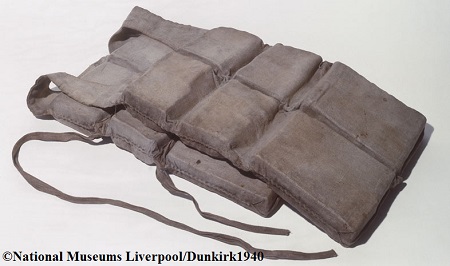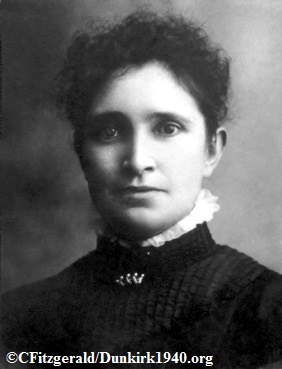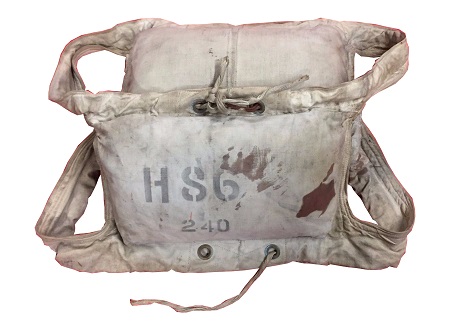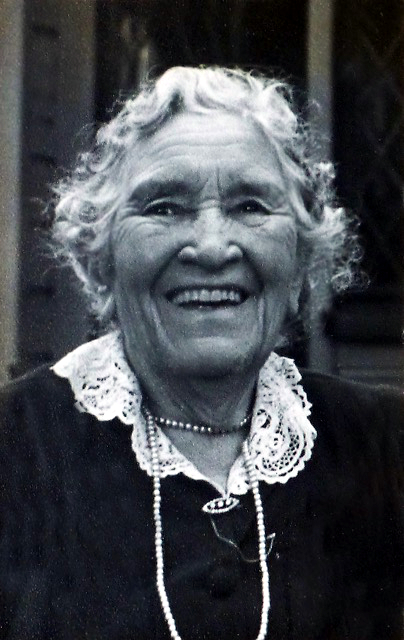Life jackets perform a single function: to enable the wearer to remain afloat with the minimum of effort. The life jacket as we know it was invented by a Captain Ward of the Royal National Lifeboat Institution in 1854. It is true that the life belt predated the invention of the modern life jacket; however, these were not available on an individual basis.
Life Jacket from an unknown survivor of the sinking of the Titanic. Reproduced by kind permission of the National Museums Liverpool. To find out more about this item, click here.
The basic principle of the life jacket was a simple one: a vest which was subdivided into pockets containing cork to provide buoyancy. While the concept was, on paper at least, a sound one, the actual practicalities of use soon began to demonstrate some fundamental flaws. While the cork offered a great deal of buoyancy, it could also represent a hazard to the wearer. This was perhaps best demonstrated in the case of the sinking of the Titanic. As the size of vessels increased, so did the heights from which survivors of a maritime incident were forced to enter the water. A shallow or gradual descent into the water was fine; however, if the wearer was forced to jump into the water (as was the case for many on the night the Titanic sank), the force of the impact would cause the jacket to move up the body with the cork impacting under the chin of the wearer, which often rendered the person unconscious. Even worse, the now-comatose individual would be left floating face down in the water at the risk of being drowned by the very device supposed to save them!
Orpheus Newman in her youth around the time of inventing the Salvus.
So enter into our story Orpheus Newman. Orpheus was born on the island of Jersey in 1863. She gained her unusual first name from the sinking of HMS Orpheus, which was lost earlier in the year she was born and from which it was initially believed that her older brother was among those lost. This clearly had a profound affect on her as she grew up, and she developed a deep-rooted fear of drowning. In 1873, the family emigrated to New Zealand and it was there that her other brother died from drowning in 1912, following a fishing accident.
Following the tragic loss of the RMS Titanic in 1912, the British Board of Trade issued a competition for a replacement design of life jacket and it was through this and with input from the British Board of Trade over a six year period, that Orpheus developed the Salvus (safe) jacket. The Salvus' difference was that it was filled with a material called kapok, as opposed to cork.
Kapok is a natural product which is procured from the Ceiba Pentandra tree whch grows in the tropics. The seed pods produce a fluffy white material often referred to as Java cotton, which is both waterproof and buoyant.
Orpheus Newman in her later years.
The Salvus jackets were ordered by the Royal Navy in 1918 and were only withdrawn at the start of WW2, as newer synthetic materials became available.
The team at Dunkirk 1940 would like to express our thanks to C. Fitzgerald for allowing us use of the images of Orpheus Newman.
